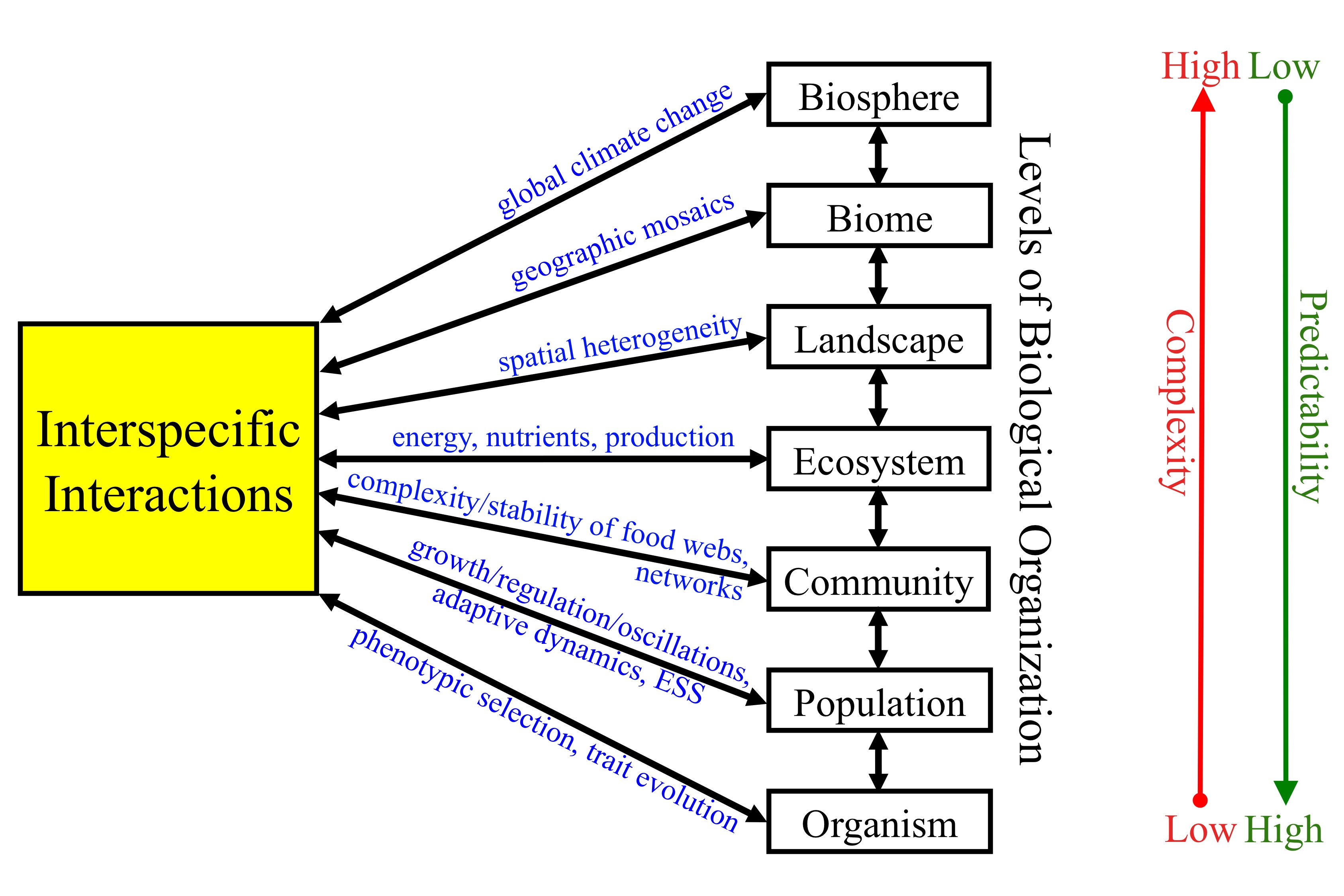General Research and Scholarly Interests
Key Words
adaptive dynamics; allometry; Cactaceae; climate change; coevolution; community ecology; complexity/stability; computational biology; consumer-resource interaction; context dependency; demography; density dependence; desert biology; entomology; environmental biology; evolutionarily stable strategy; evolutionary biology; ecosystem ecology; flower phenology; food webs; functional/numerical responses; geographic mosaics of species interactions; global change biology; granivory; indirect and trait-mediated interactions; insect ecology; integrating theory with empiricism; interaction strength; interspecific interactions; interspecific population regulation; Moran effect; mutualism; networks; nurse plants; organismal biology; parasitism; plant defense; phenological synchrony in species interactions; phenotypic selection; plant-ant, plant-florivore, plant-herbivore, plant-pollinator, parasitoid-host interactions; plant ecology; plant reproductive biology; pollination biology; population dynamics; population ecology; predation; systems biology; quantitative ecology; statistical model fitting; model selection; theoretical ecology; transitions in interaction outcomes; Mexico/U.S. environmental relations.
Conceptual Overview of Research Program
My research program is centered around the broad conceptual influences of interspecific interactions on ecological and evolutionary patterns (structure) and processes (mechanistic dynamics) within and across levels of biological organization, ranging from organisms, populations, and communities to ecosystems, landscapes, and biomes.

Some of the overarching questions of my basic research in ecology and evolutionary biology include:
- What are the influences of interspecific interactions on the adaptive dynamics, phenotypic selection, trait evolution, and evolutionary strategies of species?
- What determines the abundance and dynamics of populations?
- How and by what mechanism (e.g. consumer-resource, trait-mediated) do direct and indirect interspecific interactions influence the density dependence, population dynamics, and stability properties of interacting species?
- To what extent does phenological synchrony in key life history events between interacting species shape the fluctuations, cycles, and dynamics of the interacting populations?
- What are the emergent network structures of biological communities?
- What underlying ecological and evolutionary mechanisms of species interactions are responsible for complex structural properties of food webs and ecological networks?
- Do network structural properties influence the dynamics and complexity/stability relationships of ecological communities?
- Do network structural properties vary across spatially heterogeneous landscapes within a biome?
- What are the consequences of such spatial heterogeneity within a biome for local variation in species interactions and geographic mosaics of interspecific interactions and ecological networks more broadly?
My studies not only entail basic research, but also extend to applied issues of global change and environmental biology. My applied research examines feedbacks of global environmental change on the above questions and other issues of my basic research, including for example climatic shifts in temperature and precipitation, shifts in land-use from natural to agroecosystems, and the exploitation local natural resources of native ecosystems by resident societies with growing populations. Some of the questions motivating my applied research include:
- How will shifts in temperature and precipitation due to global climate change (GCC) alter phenotypic selection on key traits of species interactions?
- To what extent will such shifts in temperature and precipitation alter the phenological synchrony in key life history events of interacting species, and consequently, the population fluctuations, cycles, and dynamics arising from interspecific interactions?
- What are the effects of spatial heterogeneity in GCC shifts in temperature and precipitation within a biome for local variation in species interactions and consequently geographic mosaics of species interactions and ecological networks as a whole?
- How will ecological processes change through overexploiting natural resources of native ecosystems by local villages with growing populations and economic needs?